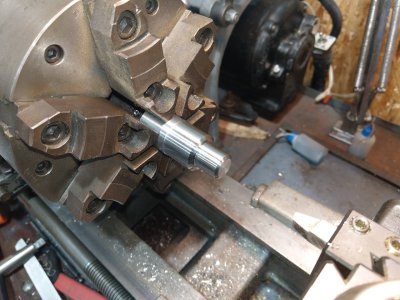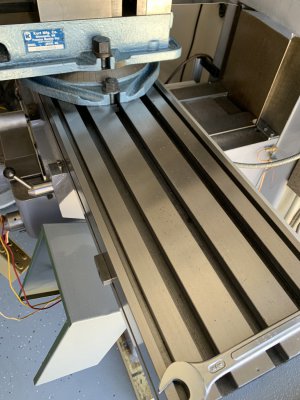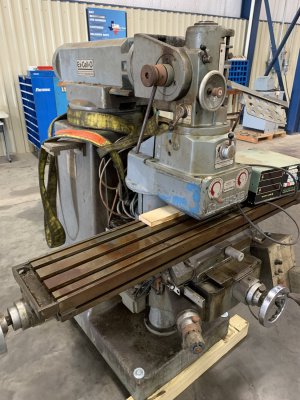When I bought my lathe off my mentor years back, included was a 3 jaw and a 4 jaw chuck as well as a 5C collet holder. He had told me many times that the 3 jaw was a "hi dollar" chuck. By the time I got them, both chucks were laying in his shop on the floor, heavily rusted, froze up and covered up. They had become too heavy for him to move. The collet holder was in the spindle (stuck, but that's another story).
When I got them home, I freed up both chucks, but the 3 jaw was showing about .006 runout. I set it aside thinking I wanted a set tru anyway. Been using the 4 jaw ever since. I didn't realize that Pratt Burnerd was making "set tru" or "set rite" chucks back in the 70's and 80's. Last night I looked up the model number of mine online to see what it might be worth. That model number was listed as a "set rite" chuck. The adjustment screws were seized but a little penetrating oil and they popped free. Once free, I could see predictable movement on the indicator.
Soooo, I spent the day with a scotch brite pad and some brake fluid cleaning it up to see what I could do with it. Once cleaned up, , indicating against the Kalamazoo collet holder I was able runout to less than a .001 with very little effort. The brake fluid did a fantastic job of getting under the rust. Loaded it up with some fresh grease and will run it for a while and see how it does.
I didn't take a before pic as I didn't think this project was going anywhere. The chuck was a decoy to put me in the shop with an abundance of ice cold adult beverages performing some mind numbing task to keep me from doing anything relevant.
Here is both of the chucks sitting on the pallet the day I hauled them off.
View attachment 417231
Here is the 3 jaw today:
View attachment 417236



 for the information on how you did it…
for the information on how you did it…
